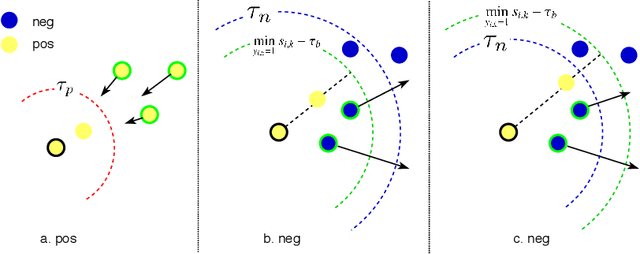Chang-Hui Liang
Dynamic Sampling for Deep Metric Learning
Apr 24, 2020



Abstract:Deep metric learning maps visually similar images onto nearby locations and visually dissimilar images apart from each other in an embedding manifold. The learning process is mainly based on the supplied image negative and positive training pairs. In this paper, a dynamic sampling strategy is proposed to organize the training pairs in an easy-to-hard order to feed into the network. It allows the network to learn general boundaries between categories from the easy training pairs at its early stages and finalize the details of the model mainly relying on the hard training samples in the later. Compared to the existing training sample mining approaches, the hard samples are mined with little harm to the learned general model. This dynamic sampling strategy is formularized as two simple terms that are compatible with various loss functions. Consistent performance boost is observed when it is integrated with several popular loss functions on fashion search, fine-grained classification, and person re-identification tasks.
Sequential VAE-LSTM for Anomaly Detection on Time Series
Oct 10, 2019Abstract:In order to support stable web-based applications and services, anomalies on the IT performance status have to be detected timely. Moreover, the performance trend across the time series should be predicted. In this paper, we propose SeqVL (Sequential VAE-LSTM), a neural network model based on both VAE (Variational Auto-Encoder) and LSTM (Long Short-Term Memory). This work is the first attempt to integrate unsupervised anomaly detection and trend prediction under one framework. Moreover, this model performs considerably better on detection and prediction than VAE and LSTM work alone. On unsupervised anomaly detection, SeqVL achieves competitive experimental results compared with other state-of-the-art methods on public datasets. On trend prediction, SeqVL outperforms several classic time series prediction models in the experiments of the public dataset.
 Add to Chrome
Add to Chrome Add to Firefox
Add to Firefox Add to Edge
Add to Edge